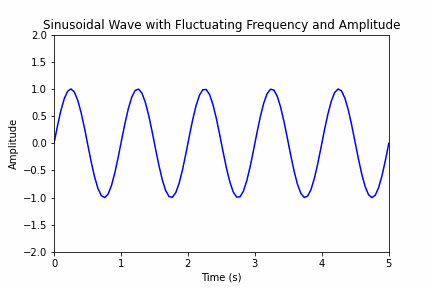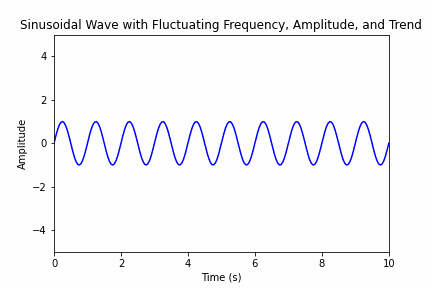As a trader or investor, understanding market cycles is crucial for making informed decisions and maximizing profits. The classic theory of market cycles outlines four stages: accumulation, markup, distribution, and markdown. However, as we will see, these phases are not enough to effectively trade in the stock market.
Understanding the Basics of Market Cycles
Bull market, bear market, sideways market… these definitions are easy to understand, but very hard to apply to make money in the stock market. What if you could have an indicator that tells you exactly what stock prices are doing and how to read the market sentiment to adjust your portfolio? There is no “one market cycle,” as we explain below.
What is a Market Cycle? An Investor’s Point of View
A market cycle refers to the natural rise and fall of financial markets over time. These cycles can be influenced by various factors such as economic conditions, political events, and investor sentiment. Recognizing where we are in a market cycle can help traders and investors predict future market movements.
We are a team of investors who grew tired of classic statistical indicators. Every time we try a new indicator on TradingView, we tend to spot how inefficient it is. RSI? That’s great, but look at those moments in which it was completely wrong. The same goes for the MACD Signal, all the stochastic indicators, and so on. This is frustrating, isn’t it? As an investor, you deserve more, and you feel you are missing the point. What if cycles were that element you were not taking into account?
The Four Classic Stages of a Market Cycle [Accumulation, Markup, Distribution, and Markdown]
The four stages of a classic market cycle are accumulation, markup, distribution, and markdown. During the accumulation phase, prices are low as savvy investors buy undervalued assets. In the markup phase, prices start to rise as more people become interested in buying. The distribution phase is when prices peak as everyone is trying to sell their assets for maximum profit. Finally, in the markdown phase, prices drop as supply exceeds demand.
While these phases can generally be defined after they have occurred, using them as a trading strategy can be challenging. The truth is that market cycles are not static but dynamic.
Why These Phases of Stock Market Cycles Are Not Enough to Trade
Classic cycle analysis relies on static cycles, which are based on fixed timeframes. This makes it easy to say things like “the stock market follows a 5-year cycle,” but the reality is that cycles vary in length and amplitude. Additionally, market conditions can change quickly, making it difficult to accurately predict future market movements using only these four phases.
The thing is, if you are on this page, it is likely that you have already tried to detect cycles. And if you are not doing it on your own but Googled us, you likely found issues when doing it. That’s ok: classic cyclic theory is quite old and does not take into account the great technology we have today. Since you are not studying cycles on a piece of paper, but you have a computer, you can see how classic cycle analysis seems to work, until it does not.
Why? That’s simply because cycles are dynamic, as we tell you below.
Our Solution: Cycles Are Dynamic
At Cycle Quest, we understand that cycles are dynamic and continuously evolving. That’s why our approach goes beyond the classic four stages. Our three-step process involves treating data correctly, applying signal processing algorithms, and finding the most statistically significant cycles to generate accurate predictions.
Specifically, this is what a cycle looks like to us:

As you can see, cycles move, and their tops and bottoms vary. This is not easy mathematics, but don’t worry: our analysis takes this factor into account.
Things Get Messy when You Consider the Trend
The fact that cycles are dynamic makes the job of a cyclic investor harder, but it does not end here: what about the trend? When analyzing cycles, it is important to consider the overall trend of a market. A cycle may have different meanings depending on whether it occurs within a bullish or bearish trend.
In a strong bullish trend, a predicted bottom may simply be an increasing bottom, meaning that prices will continue to rise. On the other hand, in a bearish trend, a predicted top may actually indicate a flat phase before further price declines. This adds another layer of complexity to cycle analysis and highlights the need for advanced techniques.
To better explain what we mean, take a look at this:

This is more realistic: the cycle varies in amplitude/frequency and is influenced by the trend. Note that cycle analysis does not predict trends but rather helps to identify market cycles within the overall trend.
The tops and bottoms are still visible from the image above. However, going against the market trends following cycle theory is really, really risky for any investor. This is the main reason why technical analysis will inevitably fail you: you are not looking at the market the right way (we were in the same situation as you are several years ago, don’t worry).
And this is something institutional investors tend to consider in their analysis, so you should definitely consider adding cyclical tools to your trading skillset.
Need Help Analyzing Cycles? Tell Us More
If you’re interested in learning more about analyzing market cycles and how Cycle Quest can help, we’d love to hear from you. Our team of experts is dedicated to providing personalized solutions for your trading needs.
Contact us today to start on your journey towards successful market analysis. Remember, understanding the dynamic nature of market cycles is crucial for maximizing profits in the stock market. So let us help you stay ahead of the game. Thank you for choosing Cycle Quest! See you soon at the top!
What’s In It For Me? Find a Cycle in the Stock Market with Us
- Are you looking for a more accurate way to analyze stock market cycles?
- Do you want to maximize your profits by understanding the dynamic nature of market cycles?
- Tired of relying on traditional, fixed cycle analysis methods that don’t always work?
At Cycle Quest, we offer personalized solutions and cutting-edge technology to help you navigate the ever-changing stock market landscape. With our three-step process, you can expect accurate predictions and better trading decisions.
Don’t miss out on potential profits – contact us today! And remember, when it comes to the stock market, knowledge is power. So let us give you the tools to stay ahead of the game. Thank you for choosing Cycle Quest! See you soon at the top

